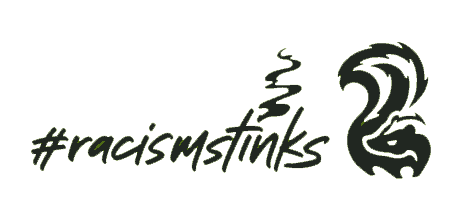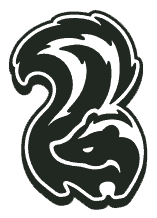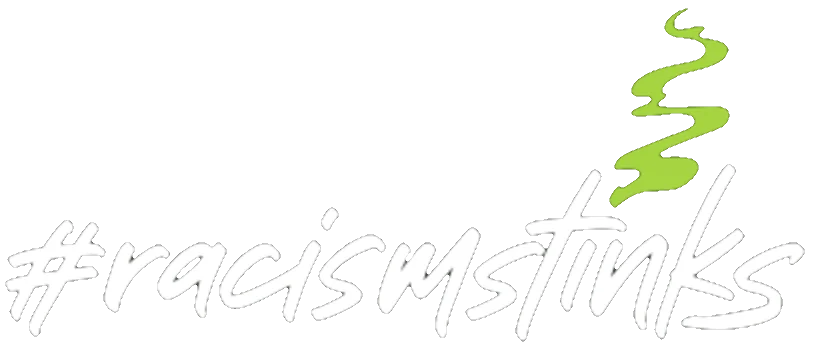WHO WE ARE
#racismstinks was founded as an answer to the #BlackLivesMatter, #AllLivesMatter, and #BlueLivesMatter discussion. At #racismstinks, we believe that people got involved in these groups, hoping their efforts would ignite empathy from outsiders to their respective causes and promote unity, but it seems like these groups caused more division.
Therefore, we seek to address the submerged undertones of why these movements have spread like wildfires across the US. The answer is racism, and racism stinks.
ORGANIZATION HISTORY
During the height of the Ferguson, Missouri unrest and perceived racial bias from police, we were a part of the African American Student Association at a local community college. We found ourselves bombarded with questions, but much to our surprise these questions were only from caucasian classmates. Questions like, “Can I join the African American Student Association, I’m not black?” “Am I allowed?” “What will my family think?” “Am I welcomed?”
We visited with an advisor who, to our surprise, was delighted non-black students wanted to join the association and explained that students who joined the African American Student Association just need to understand the focus and vision of the association and have a willingness to participate. After relaying this information to the students, still no one who was non-black joined.
We received questions on the #BlackLivesMatter movement. We were not a members of #BlackLivesMatter but believed they probably felt the same way about non-blacks joining as the African American Student Association.
During the height of the Ferguson, Missouri unrest and perceived racial bias from police, we were a part of the African American Student Association at a local community college. We found ourselves bombarded with questions, but much to our surprise these questions were only from caucasian classmates. Questions like, “Can I join the African American Student Association, I’m not black?” “Am I allowed?” “What will my family think?” “Am I welcomed?”

MEMPHIS, TN
We visited with an advisor who, to our surprise, was delighted non-black students wanted to join the association and explained that students who joined the African American Student Association just need to understand the focus and vision of the association and have a willingness to participate. After relaying this information to the students, still no one who was non-black joined.

For a class trip, AASA went to Memphis, Tennessee, and visited the Civil Rights Museum and the Burkle Estate which is the Slave Haven Underground Railroad Museum. It was at these places we learned about the important role allies played in the Abolitionist Movement and the Civil Rights Movement. We bought a pack of historical flashcards from the Civil Rights Museum gift shop and started flipping through them. We were prepared to see Martin Luther King, Malcolm X, Rosa Parks, and other black heroes whose names weren’t as widely known. Flipping through the cards, we got that and much more. There were cards with white people on them who were being honored for their bravery and their involvement in the movement. This was a mind-blowing discovery. We found out there were white people who stood in solidarity with blacks at the protests and marches. We discovered blacks and whites sat together in protest at the dangerous lunch counter sit-ins. We learned that some white people risked their lives, and were even killed fighting for freedoms they already had. This discovery touched us in a way that we just had to share this knowledge with the world. When their tour took the students to the Slave Haven and we stood in the home that a white man owned as a safe place on the Underground Railroad for runaway black people during the slave trade era, we were overcome with purpose. Visiting the Burkle Estate solidified that we not only had to share the knowledge, but also that we had to take proactive action to correct the problem of race in our society.
HOW THE NAME AND LOGO CAME ABOUT

With experience of the present state of affairs concerning race relations and a newfound knowledge of collaborative racial history, we set out to make a difference. Racism is such a devastating and ugly topic that people don’t even want to address it. Some people are afraid to speak about racism, some people are tired of the conversation, some people are so aggressive with their introduction to the discussion that it makes people instinctively put up protective barriers and reply in a self-defensive manner.
The term “lives matter” had been tainted and used to the max. It was important that everyone who wanted to be a part of the solution felt welcomed and didn’t feel as if they had to ask permission to participate in making a positive difference.
What we need to address is racism, but we don’t want to shy away from the topic or gloss over it. So, “racism” had to be in the title.
Now how could we soften the introduction of the very serious and possibly off-putting topic to racism?

We realized that most everyone loves animals and that would be a neutral way to initiate the conversation without defensive walls or accusatory language taking the lead. But which animal should represent this concept and what to call it?
Racism in the United States has been a historically black and white issue. So, we went through all the black and white animals in the world – zebras, penguins, pandas, cows, dalmatians, and skunks. The skunk was chosen because it is the least desired of all the other animals. Its protective odor, and defense mechanism, stinks, and that’s a common word used to describe anything negative.
Adding the word “stinks” to racism was a way to present the message that we are against racism and not against any other particular group. And so the #racismstinks movement was born.
WHERE WE ARE NOW
We wholeheartedly believe that in order to make a difference we have to engage with controversial figures of different races in order to tear down walls and build bridges for the community.
The fact is that racism affects us all. Some people are directly impacted by the negative effects and others are indirectly impacted. When racism and hate thrive in our society we all lose out on the beauty that varying cultures bring to our lives.
“It takes us all,” which is what we learned from our class trip to Memphis, where we came to understand the role and importance of allies, “Together We Will Change The World.”




